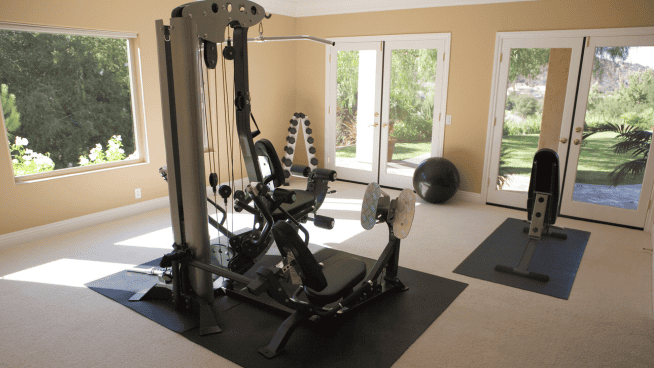Spotting a Snake Oil Salesman: 4 Telltale Signs of a Terrible Trainer
As a parent, you understand that participating in youth athletics forces your kid to learn how to deal with challenges and adversity. Losses are a part of the process. Still, you want your kid to make the team, you want them to start, and you want them to maybe be good enough to earn a college scholarship.
So, you hop online or start asking around, hoping to find a local trainer who can help take your child’s game to new heights. Just one problem—there are a lot of questionable speed, strength and skill trainers out there, and it can be hard for the untrained eye to distinguish a legit performance coach from an opportunistic shyster. For every competent trainer out there, there are a handful of incompetent trainers peddling snake oil. These are the people who’d sell you an oceanfront property in Idaho if they could get away with it.
But how in the world can you tell whether the trainer you’re going to hook your kid up with is a good one? For one, you can’t take their word for it. Many trainers claim to be “world-renowned” or “highly sought-after,” yet haven’t produced a single D1 or professional athlete. And while certain certifications do signify a trainer has a strong foundation of knowledge (such as the NSCA’s Certified Strength and Conditioning Specialist certification), others are largely trivial. To help you avoid trainers who don’t truly have you or your child’s best interests at heart, here are four common red flags to be wary of.
1. There’s No Proof of Clients Nor Results
Thanks to the widespread use of the internet, anyone can now express their ideas on strength, speed or skill development. This is great because it gives excellent coaches a platform to share their knowledge with thousands of people all around the world.
However, it also gives some unqualified people the chance to write articles and sell products as if they’re an authority on the topic. They’re often able to cover up their lack of real-world experience with slick marketing and manipulative tactics. Just because someone has a large online fanbase doesn’t mean they know what they’re talking about. One way you can quickly spot the difference between a legit performance coach and a phony?
Message or call them saying you’re thinking about hiring them to help your kid perform better in their sport. Ask if it’s OK for you to come by their gym and see how they train athletes before making your decision. This is always a great step to take before any money exchanges hands, as it will allow you to get a feel for their style of training and watch how they interact with the athletes. Watching a trainer in action is one of the best indicators of coaching ability, or the lack of it. Can they demonstrate every exercise the athletes are expected to perform? Do they take the time to coach correct movement or just yell at athletes like a drill sergeant? Are they all talk or do they also walk the walk?
If the trainer welcomes you dropping by, take advantage of the opportunity to learn more about them. But if the trainer seems hesitant and slippery (they may cite “confidentiality agreements” or some other lame excuse) and refuses to let you drop by to observe a training session, that’s a cue to steer clear. Great coaches have nothing to hide.
Looking through a trainer’s social media presence can also give you some insight into whether or not they’re the real deal. Not every legit trainer is going to have a significant social media presence. Many of us are simply too busy training athletes to spend hours each day building an online following. I know after another 12-hour day at the gym with my hockey players in their offseason, I just wanted to unwind by reading a book or watching The Wire before dozing off. Don’t equate someone’s number of followers or likes (or lack thereof) with their quality as a coach. Some of the best trainers and coaches in the world have little to no social media presence.
On the flip side, a massive following doesn’t mean that person’s actually a good trainer or coach. There’s a reason most of those million-follower YouTube fitness accounts don’t actually train anyone of note. There are only so many hours in a day, and you can either spend them down at the gym with a relatively small group of athletes, taking them through intense workouts designed to achieve physical superiority, or you can use that time to build your online presence. Doing both on a large scale is all but impossible.
If a trainer seems to be consistently posting on social media yet rarely includes any clients or results in these updates, that can be a troubling sign. Examine their social media accounts with a critical eye and ask yourself:
- Does the trainer appear in the vast majority of posts and videos instead of their clients/athletes?
- Do they often repost generic exercise advice or motivational quotes from other accounts, yet rarely offer insights or valuable content of their own?
- Does their feed resemble more of a personal vlog/blog than a professional resource centered around athletic performance?
If you answered “yes” to one or more of these questions, chances are high that you’re dealing with a trainer who talks a big game on the internet but doesn’t back it up with real-world results. They either lack clients, results or both.
If you’re going around calling yourself a trainer or coach you should actually train/coach someone AND have proof that your clients/athletes are improving thanks to your program. It takes more than posting faux-motivational quotes and offering custom meal plans in your Instagram bio to be a respected trainer. But I digress.
If a trainer seems to prioritize their own social media image over the tangible progress of your child, that’s a telltale sign of an “internet trainer.” Their goal is not to help athletes get better, but to garner thousands of followers, amass thousands of likes, become internet famous, then use that fame to peddle mediocre exercise programs and overpriced supplements.
2. They Love Unstable Surface Training
There’s a very simple (but surprisingly effective) way for inept trainers to appear competent to the untrained eye. If they can’t actually make anyone stronger, faster or more explosive, they can always lean on an abundance of unstable surface training—a gimmicky way to mask one’s incompetence as a trainer. A telltale sign of this is integrating BOSU balls, exercise balls, inflated discs, etc. into any and every movement imaginable.
It baffles me how many parents (and sports coaches) buy into unbalanced training for enhancing athletic performance. It’s all smoke and mirrors. If your kid is involved in a major sport such as football, soccer, basketball, hockey, baseball or tennis, they play and compete on stable ground. So how exactly does unstable surface training carry over to the playing field? It doesn’t.
Don’t believe me? Fine. Go ahead and have your child do silly BOSU Squats and BOSU Bench Presses with a pair of 10-pound dumbbells. Just don’t be surprised when he gets blasted into next week by the linebacker who spent his offseason pushing, pulling and squatting huge weights.
But don’t just take my word for it. A 2007 study published in The Journal of Strength and Conditioning Research found unstable surface training to be vastly inferior to training on stable ground. In the study, collegiate soccer players were divided into two groups. The training program for both groups was 98% identical, including Squats, Deadlifts and Olympic lift variations with challenging loads on stable surfaces. The only difference was that the second group also performed one exercise per session of Squats, Deadlifts, Lunges, Single-Leg Squats, and Single-Leg Balances on 14-inch inflatable rubber discs.
The result? After 10 weeks of training, athletes in the stable training group posted significantly improved numbers in the Countermovement Jump (CMJ), 40-Yard Dash and T-Test. Subjects in the unstable training group showed no significant improvements in the CMJ. Their 40-Yard Sprint time improved a little, but here’s the really interesting part. On average, the unstable group was 0.04 seconds faster than the stable group at the beginning of the 10-week training period, but ended up being 0.06 seconds slower after it. The same thing happened with the T-Test. Once again, the unstable group had a faster average time by 0.09 seconds during pre-testing, but was actually 0.03 seconds slower than the unstable group at post-testing.
These results show that there really is little reason to incorporate unstable surface training in resistance programs for healthy athletes looking to gain speed, agility or power. Even when unbalanced movements comprised a measly 2% of overall training volume, improvements in athletic performance were significantly hampered. While unstable surface training can play a beneficial role in rehab, it simply doesn’t offer much when training healthy athletes.
If you look at the training protocols designed by today’s top strength coaches (and I’m referring to coaches who are actually producing athletes, not those who are simply internet famous), you won’t find any Curls, Squats, Bench Presses, etc. done on wobbly implements. If a trainer is adamant about using Swiss Balls, BOSU balls, wobble boards or small inflated discs in much of their training of healthy athletes, I believe that’s reason enough for you to hit the exit button right then and there.
3. They Abuse Bands and Chains with Beginners
Similar to unstable surface training, exercises that utilize bands and chains look cool and effective to your average person who knows little about fitness. But unlike unstable surface training, bands and chains can play a useful (albeit minor) role in athletic training. However, an eagerness to abuse these implements with beginners is a telltale sign of a misguided trainer.
Let’s backtrack for a minute and look at the bigger picture. Bands and chains are used in powerlifting training to provide what is called “accommodating” or “variable” resistance. They typically alter the strength curve of a lift by increasing resistance the closer you get to the top of the movement. Using bands or chains can help experienced lifters improve their maxes by learning how to accelerate a barbell through the sticking point.
There’s a time and place for bands/chains in the weight room. But it’s not with inexperienced athletes. If a male high school athlete can barely squat 185 pounds, he’s got no business fooling around with 95 pounds and a pair of yellow bands. They’re too weak to get anything out of that.
My advice? Spend the next couple of years building a foundation of strength and body control, get your squat max closer to 400 pounds, and then maybe we can rethink the whole band/chain aspect of training.
Trainers who abuse these tools with weak beginners do so because they don’t know how to get a novice strong with traditional training. Once again, in an attempt to hide their incompetency, they have to resort to gimmicky tactics. When training for athletic performance, what looks “cool” is rarely the answer.
4. They Love Complicated Footwork Drills
Crazy ladder workouts and similar “quick feet” drills seem to make up the majority of splashy social media speed and agility videos. Unfortunately, this is nothing but a disingenuous way to make a slow and weak athlete appear quick and agile.
For the uninitiated, fancy speed ladder drills look like a magical tool for developing quickness. Even the most uncoordinated athlete can look reasonably fast within a few training sessions once they get the hang of timing on the ladder. Unfortunately, that’s where it ends. The quick feet don’t transfer from the ladder to the field. Why?
Because speed is about how much force you can put into the ground and how quickly you can do so. Yes, you’re moving your feet fast during these complicated footwork drills. But you’re applying about as much force into the ground as a tap dancer. Because of this, there’s practically zero carryover to enhancing an athlete’s game speed or agility.
If you want to run faster, practice running fast. Sprinters are the fastest athletes on Earth. Ever stop to think why their training consists of sprinting and weight training and not complex footwork drills? Exactly.
Again, don’t just take my word for it. A study published in the Journal of Applied Physiology concluded that “human runners reach faster top speeds not by repositioning their limbs more rapidly in the air, but by applying greater support forces to the ground.” Ladder exercises require you to churn your legs quickly, not apply maximal force in the direction you’re going. This is the exact opposite of what’s needed to run fast.
Trainers who don’t have the skills to get their athletes faster have to resort to complicated footwork drills. It’s trendy and gets likes on social media, but pales in comparison to proven ways of improving speed (sprinting, lifting, plyometrics, etc.)
This leads us back to our initial question. What can you do to steer clear from scamming trainers?
First, don’t get fooled by the allure of six-pack abs, a long list of certifications you don’t know the meaning of, or a significant social media following. Your best bet is to do your homework and audit a slew of potential trainers. Observing a workout is a great idea. Be wary of trainers who seem to rely on flashy, overcomplicated drills and exercises over a mastery of the basics. After a thorough background check, you should be able to answer at least these three questions: Who has the the trainer worked with? Are his/her athletes getting results from training? And are those results helping them perform better in their sport?
As my early mentor NHL strength coach Ben Prentiss, has said, “Good trainers can name names, and they’ll you how many gold medals their athletes have won!” Obviously, not every good trainer has trained a gold medalist. But they have helped good athletes become great ones, and they should be willing to talk to you about it. If a trainer can’t do that? Hire someone who can.
Photo Credit: Mikolette/iStock
READ MORE:
RECOMMENDED FOR YOU
Spotting a Snake Oil Salesman: 4 Telltale Signs of a Terrible Trainer
As a parent, you understand that participating in youth athletics forces your kid to learn how to deal with challenges and adversity. Losses are a part of the process. Still, you want your kid to make the team, you want them to start, and you want them to maybe be good enough to earn a college scholarship.
So, you hop online or start asking around, hoping to find a local trainer who can help take your child’s game to new heights. Just one problem—there are a lot of questionable speed, strength and skill trainers out there, and it can be hard for the untrained eye to distinguish a legit performance coach from an opportunistic shyster. For every competent trainer out there, there are a handful of incompetent trainers peddling snake oil. These are the people who’d sell you an oceanfront property in Idaho if they could get away with it.
But how in the world can you tell whether the trainer you’re going to hook your kid up with is a good one? For one, you can’t take their word for it. Many trainers claim to be “world-renowned” or “highly sought-after,” yet haven’t produced a single D1 or professional athlete. And while certain certifications do signify a trainer has a strong foundation of knowledge (such as the NSCA’s Certified Strength and Conditioning Specialist certification), others are largely trivial. To help you avoid trainers who don’t truly have you or your child’s best interests at heart, here are four common red flags to be wary of.
1. There’s No Proof of Clients Nor Results
Thanks to the widespread use of the internet, anyone can now express their ideas on strength, speed or skill development. This is great because it gives excellent coaches a platform to share their knowledge with thousands of people all around the world.
However, it also gives some unqualified people the chance to write articles and sell products as if they’re an authority on the topic. They’re often able to cover up their lack of real-world experience with slick marketing and manipulative tactics. Just because someone has a large online fanbase doesn’t mean they know what they’re talking about. One way you can quickly spot the difference between a legit performance coach and a phony?
Message or call them saying you’re thinking about hiring them to help your kid perform better in their sport. Ask if it’s OK for you to come by their gym and see how they train athletes before making your decision. This is always a great step to take before any money exchanges hands, as it will allow you to get a feel for their style of training and watch how they interact with the athletes. Watching a trainer in action is one of the best indicators of coaching ability, or the lack of it. Can they demonstrate every exercise the athletes are expected to perform? Do they take the time to coach correct movement or just yell at athletes like a drill sergeant? Are they all talk or do they also walk the walk?
If the trainer welcomes you dropping by, take advantage of the opportunity to learn more about them. But if the trainer seems hesitant and slippery (they may cite “confidentiality agreements” or some other lame excuse) and refuses to let you drop by to observe a training session, that’s a cue to steer clear. Great coaches have nothing to hide.
Looking through a trainer’s social media presence can also give you some insight into whether or not they’re the real deal. Not every legit trainer is going to have a significant social media presence. Many of us are simply too busy training athletes to spend hours each day building an online following. I know after another 12-hour day at the gym with my hockey players in their offseason, I just wanted to unwind by reading a book or watching The Wire before dozing off. Don’t equate someone’s number of followers or likes (or lack thereof) with their quality as a coach. Some of the best trainers and coaches in the world have little to no social media presence.
On the flip side, a massive following doesn’t mean that person’s actually a good trainer or coach. There’s a reason most of those million-follower YouTube fitness accounts don’t actually train anyone of note. There are only so many hours in a day, and you can either spend them down at the gym with a relatively small group of athletes, taking them through intense workouts designed to achieve physical superiority, or you can use that time to build your online presence. Doing both on a large scale is all but impossible.
If a trainer seems to be consistently posting on social media yet rarely includes any clients or results in these updates, that can be a troubling sign. Examine their social media accounts with a critical eye and ask yourself:
- Does the trainer appear in the vast majority of posts and videos instead of their clients/athletes?
- Do they often repost generic exercise advice or motivational quotes from other accounts, yet rarely offer insights or valuable content of their own?
- Does their feed resemble more of a personal vlog/blog than a professional resource centered around athletic performance?
If you answered “yes” to one or more of these questions, chances are high that you’re dealing with a trainer who talks a big game on the internet but doesn’t back it up with real-world results. They either lack clients, results or both.
If you’re going around calling yourself a trainer or coach you should actually train/coach someone AND have proof that your clients/athletes are improving thanks to your program. It takes more than posting faux-motivational quotes and offering custom meal plans in your Instagram bio to be a respected trainer. But I digress.
If a trainer seems to prioritize their own social media image over the tangible progress of your child, that’s a telltale sign of an “internet trainer.” Their goal is not to help athletes get better, but to garner thousands of followers, amass thousands of likes, become internet famous, then use that fame to peddle mediocre exercise programs and overpriced supplements.
2. They Love Unstable Surface Training
There’s a very simple (but surprisingly effective) way for inept trainers to appear competent to the untrained eye. If they can’t actually make anyone stronger, faster or more explosive, they can always lean on an abundance of unstable surface training—a gimmicky way to mask one’s incompetence as a trainer. A telltale sign of this is integrating BOSU balls, exercise balls, inflated discs, etc. into any and every movement imaginable.
It baffles me how many parents (and sports coaches) buy into unbalanced training for enhancing athletic performance. It’s all smoke and mirrors. If your kid is involved in a major sport such as football, soccer, basketball, hockey, baseball or tennis, they play and compete on stable ground. So how exactly does unstable surface training carry over to the playing field? It doesn’t.
Don’t believe me? Fine. Go ahead and have your child do silly BOSU Squats and BOSU Bench Presses with a pair of 10-pound dumbbells. Just don’t be surprised when he gets blasted into next week by the linebacker who spent his offseason pushing, pulling and squatting huge weights.
But don’t just take my word for it. A 2007 study published in The Journal of Strength and Conditioning Research found unstable surface training to be vastly inferior to training on stable ground. In the study, collegiate soccer players were divided into two groups. The training program for both groups was 98% identical, including Squats, Deadlifts and Olympic lift variations with challenging loads on stable surfaces. The only difference was that the second group also performed one exercise per session of Squats, Deadlifts, Lunges, Single-Leg Squats, and Single-Leg Balances on 14-inch inflatable rubber discs.
The result? After 10 weeks of training, athletes in the stable training group posted significantly improved numbers in the Countermovement Jump (CMJ), 40-Yard Dash and T-Test. Subjects in the unstable training group showed no significant improvements in the CMJ. Their 40-Yard Sprint time improved a little, but here’s the really interesting part. On average, the unstable group was 0.04 seconds faster than the stable group at the beginning of the 10-week training period, but ended up being 0.06 seconds slower after it. The same thing happened with the T-Test. Once again, the unstable group had a faster average time by 0.09 seconds during pre-testing, but was actually 0.03 seconds slower than the unstable group at post-testing.
These results show that there really is little reason to incorporate unstable surface training in resistance programs for healthy athletes looking to gain speed, agility or power. Even when unbalanced movements comprised a measly 2% of overall training volume, improvements in athletic performance were significantly hampered. While unstable surface training can play a beneficial role in rehab, it simply doesn’t offer much when training healthy athletes.
If you look at the training protocols designed by today’s top strength coaches (and I’m referring to coaches who are actually producing athletes, not those who are simply internet famous), you won’t find any Curls, Squats, Bench Presses, etc. done on wobbly implements. If a trainer is adamant about using Swiss Balls, BOSU balls, wobble boards or small inflated discs in much of their training of healthy athletes, I believe that’s reason enough for you to hit the exit button right then and there.
3. They Abuse Bands and Chains with Beginners
Similar to unstable surface training, exercises that utilize bands and chains look cool and effective to your average person who knows little about fitness. But unlike unstable surface training, bands and chains can play a useful (albeit minor) role in athletic training. However, an eagerness to abuse these implements with beginners is a telltale sign of a misguided trainer.
Let’s backtrack for a minute and look at the bigger picture. Bands and chains are used in powerlifting training to provide what is called “accommodating” or “variable” resistance. They typically alter the strength curve of a lift by increasing resistance the closer you get to the top of the movement. Using bands or chains can help experienced lifters improve their maxes by learning how to accelerate a barbell through the sticking point.
There’s a time and place for bands/chains in the weight room. But it’s not with inexperienced athletes. If a male high school athlete can barely squat 185 pounds, he’s got no business fooling around with 95 pounds and a pair of yellow bands. They’re too weak to get anything out of that.
My advice? Spend the next couple of years building a foundation of strength and body control, get your squat max closer to 400 pounds, and then maybe we can rethink the whole band/chain aspect of training.
Trainers who abuse these tools with weak beginners do so because they don’t know how to get a novice strong with traditional training. Once again, in an attempt to hide their incompetency, they have to resort to gimmicky tactics. When training for athletic performance, what looks “cool” is rarely the answer.
4. They Love Complicated Footwork Drills
Crazy ladder workouts and similar “quick feet” drills seem to make up the majority of splashy social media speed and agility videos. Unfortunately, this is nothing but a disingenuous way to make a slow and weak athlete appear quick and agile.
For the uninitiated, fancy speed ladder drills look like a magical tool for developing quickness. Even the most uncoordinated athlete can look reasonably fast within a few training sessions once they get the hang of timing on the ladder. Unfortunately, that’s where it ends. The quick feet don’t transfer from the ladder to the field. Why?
Because speed is about how much force you can put into the ground and how quickly you can do so. Yes, you’re moving your feet fast during these complicated footwork drills. But you’re applying about as much force into the ground as a tap dancer. Because of this, there’s practically zero carryover to enhancing an athlete’s game speed or agility.
If you want to run faster, practice running fast. Sprinters are the fastest athletes on Earth. Ever stop to think why their training consists of sprinting and weight training and not complex footwork drills? Exactly.
Again, don’t just take my word for it. A study published in the Journal of Applied Physiology concluded that “human runners reach faster top speeds not by repositioning their limbs more rapidly in the air, but by applying greater support forces to the ground.” Ladder exercises require you to churn your legs quickly, not apply maximal force in the direction you’re going. This is the exact opposite of what’s needed to run fast.
Trainers who don’t have the skills to get their athletes faster have to resort to complicated footwork drills. It’s trendy and gets likes on social media, but pales in comparison to proven ways of improving speed (sprinting, lifting, plyometrics, etc.)
This leads us back to our initial question. What can you do to steer clear from scamming trainers?
First, don’t get fooled by the allure of six-pack abs, a long list of certifications you don’t know the meaning of, or a significant social media following. Your best bet is to do your homework and audit a slew of potential trainers. Observing a workout is a great idea. Be wary of trainers who seem to rely on flashy, overcomplicated drills and exercises over a mastery of the basics. After a thorough background check, you should be able to answer at least these three questions: Who has the the trainer worked with? Are his/her athletes getting results from training? And are those results helping them perform better in their sport?
As my early mentor NHL strength coach Ben Prentiss, has said, “Good trainers can name names, and they’ll you how many gold medals their athletes have won!” Obviously, not every good trainer has trained a gold medalist. But they have helped good athletes become great ones, and they should be willing to talk to you about it. If a trainer can’t do that? Hire someone who can.
Photo Credit: Mikolette/iStock
READ MORE:










